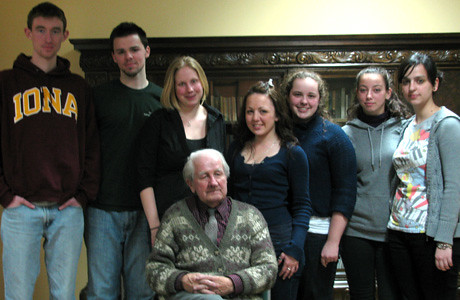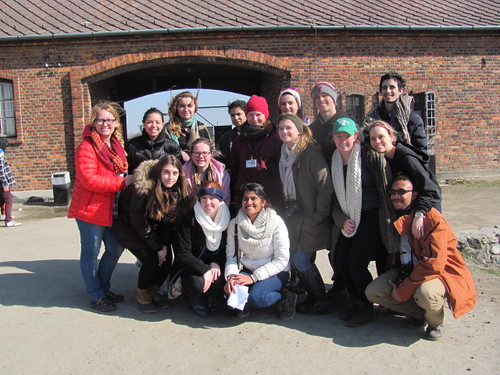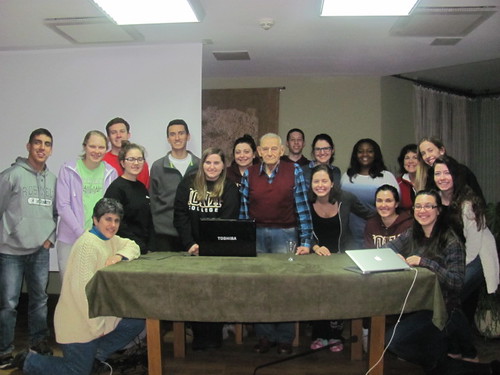“Forgiveness
demonstrates the presence in the world of the love
which is more powerful than
sin.”
- Pope John Paul II
This is
just one of the quotes I wrote down from the Pope John Paul II museum, but I
think it’s so powerful. We’ve now been back for a little over a month, and with
the stress of the end of the semester between finals and papers due, our trip
to Oswiecim seems so far away. However, I still think about what we learned in
that short time away. One of the main things I realized is that there were so
many things surrounding WWII and the Shoah that I will never be able to
understand, and I definitely struggled with that realization for a while, even
for a good few weeks after we were back. However, what we’ve learned and
continue to learn has shown me that love and forgiveness overpowers the
hatred that continues to exist in our world.
Fr. Manfred, one of the
lecturers we were lucky enough to have at the Center for Dialogue and Prayer, spoke to us about love and about how God is manifested
through love. He told us that it was through love that God was present during
the Shoah – that it was through love that God was present in the camps. He made
it easier for me to understand that though love isn’t always clear and isn’t
present in every story from that dark time, some stories allow us to see it in
action and in this way, to see how God was present during the Shoah.
He shared a few stories of his encounters with survivors who
had different perspectives on this idea of love and of God’s presence. One
survivor that he knew had survived Auschwitz II-Birkenau, but his job was to
throw corpses into the burning fields every day. Because of this, he never felt
God’s presence; he didn’t understand why they had to die, or why he had to burn
them, and he would hope that people would come to help their situation. He
would wonder where God was and continue to ask why; he couldn’t see God through
the destruction or in the people that surrounded him. I found the next
perspective interesting as well because of what Fr. Manfred had to say about
it. This woman worked in the women’s camp in Birkenau and saw people go to the
gas chambers; she asked Fr. Manfred what he meant by God, and she told him that
because of what she saw there, she is unable to believe in God. She did say,
though, that she believes in love. Fr. Manfred said to us something like, “who
am I?” to tell her that it’s the same thing – that when you believe in love, “that
is what I am talking about when I speak of God.” I found this powerful, as it
is in alignment with the teaching of respect for all beliefs.
The next story is yet a different outlook: this man was also a
survivor of Auschwitz-II Birkenau, and he was not religious when he was there.
However, he said that his experience during the Shoah made him realize that it
means something to be Jewish. He began to study and learn and found that
whenever people
helped one another, when they were good to one another, when they did something
for another that costed more than it helped them, that that was God in
action. When you do something out of love that costs more than you gain,
this is God — and it just amazes me that he took this understanding away
from his own experience at Birkenau.
I’ve
decided that while it is true that I will most likely never understand many of
aspects of the Shoah, I know now that understanding everything is not the
point. The point is standing witness to the tragedies of the past as well as to the progress we’ve made as a human race. The point is the
greater understanding of love and respect for one another as humans that has
come out of this experience for me and for our class, and hopefully, for the
world as a whole. I’ve realized that in my memories of our time in Auschwitz,
I’m starting to see the love more than the hate. Of course it’s easier to see the
love when you aren’t standing in the middle of where it all happened, where the
hate allowed for the worst crimes against humanity to be committed, but the understanding
of how far we’ve come along with the realization of how much further we need to
go is something I’m lucky to have acquired from this once in a lifetime
experience.
 |
| The Prayer of St. Francis, displayed in the Center for Dialogue and Prayer |






















